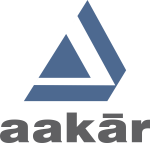“The Guggenheim Helsinki proposal detailed an innovative, multi-disciplinary museum of Art & Design. It called for a design of the highest architectural quality and envisioned a museum that created a meaningful presence in Helsinki and offered a civic space where both visitors and residents could gather.”
Strategically located between the grids of city block and harbor edge, the Guggenheim Museum extends from its urban setting / public plaza into an exhibition of diverse spaces. The vistas thus created unfold initially from one plane and gradually grow into multileveled planes. The flexibility offered to the curator in choreographing spaces for every exhibit as an event facilitates his /her own vistas and the movement through. The volumetric play of mass and void carve out ‘types of spaces’ which can be programmed further by the curator to encourage interaction between the artist, exhibits and the public.
The concept of ‘piano nobille’ is adopted to give urban scale to the building. The sense of grandeur is also achieved the way the building sits on an elevated platform which in a way strengthens its role of National Institution as foundation of cultural life & a symbolic Gateway to the Helsinki city.
The building form primarily takes inspiration from broken ice plates with sharp edges pushed through the axis of force. Whereas the interior of the building takes inspiration from wood and its shavings brings the sense of fluidity as well as gives warmth, thus allowing the transition between exterior and interior.
While responding to the historicity aspect of the city, the museum buildings inserts imagery of ‘civic space’ in the existing urban setting viewed and enjoyed from the prominent landmarks, vantage points, public places, parks and movement corridors.
The considerations for environmental issues have been addressed thoroughly such as – lighting taken through sandblasted multiple layers of Plexiglass, phase change material used as thermal mass in the cavity of permanent walls and below mezzanine ceilings, controlled layer of snow/ ice over roof to provide insulation during winter, laminated timber construction as roofing and Scrimber used as external cladding, triple glazing with air sealed spaces and adequate ventilation.
The design of the Museum promises a constructive dialogue between enduring values of a community and humane urban experience through the vocabulary of art and architecture. This sets itself in a dynamic natural setting with the support of technological innovations.

